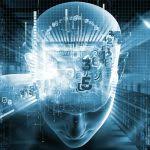The AI Black Market A Criminal’s Best Friend.
Artificial intelligence (AI) has long been heralded as the next frontier in technology, promising advancements in healthcare, finance, transportation, and countless other fields. Yet, as with any powerful tool, it can be weaponized. In an age where technology seamlessly integrates into daily life, a troubling emergence has taken root: the AI black market. This clandestine realm is the playground of criminals, where sophisticated algorithms and AI-based technologies are bought, sold, and exploited for malevolent purposes. In this deep dive, we explore the shadowy world of the AI black market, shedding light on its operations and implications for society.
The Dark Side of AI
AI is not inherently evil, but its potential for misuse is staggering. The same technologies that enable advancements in medical diagnostics or autonomous driving can also serve as instruments of crime. From tools that facilitate cyberattacks to systems that generate deepfakes capable of ruining reputations and undermining democracy, the dark side of AI reveals itself when it falls into the wrong hands.
After all, the algorithms powering these technologies are essentially just sets of rules and data, which can be applied to both good and bad intentions. This duality sets the stage for the emergence of the AI black market.
The AI Black Market: A Landscape of Crime
The AI black market is not a single entity but rather a complex web of underground networks on the Darknet, where anything from stolen databases to sophisticated hacking tools can be purchased. Criminals can find everything they need to launch attacks, steal identities, or create chaos all while remaining largely anonymous.
Key Features of the AI Black Market
- Advanced Hacking Tools: With readily available algorithms, cybercriminals can penetrate firewalls and breach data protection systems that were once considered impenetrable. These AI-driven hacking tools are often sold with detailed instructions, making it easier for even less experienced hackers to execute sophisticated attacks.
- Deepfake Technology: AI-powered deepfakes pose significant threats to personal identities, reputations, and national security. For a few hundred dollars, criminals can access software that creates remarkably realistic fake videos or audio recordings, leading to identity theft, fraud, or even international political manipulation.
- Data Brokering: Personal data has become the new currency. Stolen data, such as credit card information, social security numbers, and proprietary business information, is readily traded. AI can analyze and aggregate these datasets to enhance the value of the information, making it even more appealing to criminals.
Insights from Experts
To better understand the emergence and implications of the AI black market, we consulted various experts in the fields of AI, cybersecurity, and criminal behavior.
Cybersecurity Professionals
Our interviews with cybersecurity professionals revealed alarming trends. Many emphasized that the sophistication of AI tools is outpacing the defenses being developed to combat cybercrime. Continuous advancements in machine learning make it increasingly difficult for organizations to protect themselves.
Reformed Hackers
Former black hat hackers provided further insight into the culture and critical aspects of these underground networks. They shared that the allure of financial gain, alongside the thrill of bending technology to one’s will, drives many to engage in these illegitimate activities. Furthermore, they highlighted the surprisingly low barriers to entry for new criminals, exacerbated by the availability of tutorials and resources online.
Anatomy of an AI Black Market Transaction
Understanding how these transactions occur can shed light on the threats we face. Most exchanges happen through anonymous marketplaces accessible only via special browsers designed to protect users’ identities. Transactions usually occur in cryptocurrency, further complicating tracking efforts by law enforcement.
Criminals often employ tactics such as escrow services, synthetic identities, and reputation systems to build trust and reduce the risk of scams. These layered systems of anonymity make it challenging for authorities to infiltrate and shut down these operations.
Raising Awareness and Countermeasures
As the AI black market continues to evolve, it is vital for governments, corporations, and individuals to recognize the risks posed by the misuse of AI technology. Here are a few countermeasures to consider:
- Education: Raising awareness about the capabilities and dangers of AI can help organizations and individuals take steps to safeguard their information and identities.
- Collaboration: Law enforcement agencies must collaborate with tech companies and cybersecurity experts to develop strategies for closing down these dark networks.
- Regulation: Developing comprehensive regulations around AI technology can help prevent its misuse and protect individuals and institutions from malicious actors.
- Innovation in Defense: Companies must invest in advanced security technologies that leverage AI for defense rather than offense, using machine learning to identify and respond to threats in real-time.
Conclusion
The rise of the AI black market poses an urgent threat to personal security, privacy, and global stability. It is imperative that stakeholders in technology, law enforcement, and policymaking come together to address this escalating challenge. By raising awareness of the dangers posed by the misuse of AI and fostering a greater understanding of the need for ethical technology practices, we can work towards a future where AI serves humanity rather than undermining it.
As we continue to explore the possibilities of artificial intelligence, let us ensure that its incredible potential is not overshadowed by those who would use it as a tool for crime. The conversation starts here, and it’s up to all of us to sustain it.








